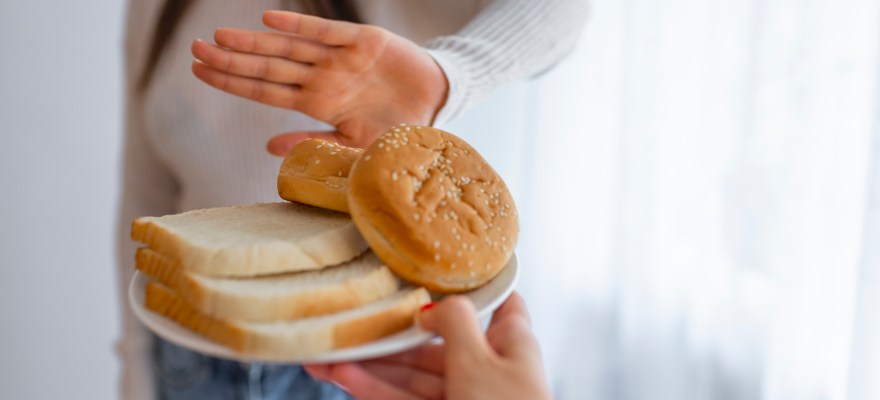
With May being Food Allergy Awareness Month, now is a great time to go over some news, tips and precautions for parents of children with food allergies.
What is a Food Allergy?
A food allergy happens when the body’s immune system sees a particular food as harmful. Some of the most common food allergens include eggs, milk, peanuts, tree nuts, sesame, shellfish and soy. Food allergies affect 1 in 13 kids in the United States and often cause a heavy emotional and financial burden on families with a child affected.
Symptoms of Food Allergy
If you suspect your child has a food allergy, it’s important to avoid that food. But, seek evaluation by an allergist to be sure. Gideon Lack, MD, head of pediatric allergy at King’s College, London, explained the symptoms of food allergy. Children with food allergies often suffer from the following:
- Itching, sneezing, hives, rashes, nausea or vomiting, diarrhea or stomach pain. (NOTE: If two or more body systems are affected, however, it is considered severe.)
- Severe signs and symptoms may include breathing difficulties, wheezing, reduced or loss of consciousness, pallor, a rapid heart rate, low blood pressure, among others.
- Severe food allergic reactions/anaphylaxis require immediate treatment with epinephrine and medical evaluation.
Preventing Food Allergies
While there is currently no medicine to cure an existing food allergy in children, the goal of treatment is to stay away from the foods that cause the symptoms, according to Cedars-Sinai. You can read more about treatment here.
Some experts say that introducing peanuts and other common food allergens at a young age can prevent a peanut allergy and potentially other food allergies as well. Dr. Lack conducted research that found most peanut allergies can be prevented with early and regular peanut consumption starting in infancy.
“My colleagues and I conducted the LEAP Study, which showed up to an 86% reduction in the rate of peanut allergies for high-risk babies who started peanut foods in the first year of life and consumed them regularly until age 5,” Dr. Lack explained. “This discovery changed pediatric feeding guidelines around the globe to recommend early allergen introduction.”
Parents might wonder: How exactly do I give peanuts to an infant? Some ways to do this include mixing peanut butter with foods like infant cereal or creating teething biscuits.
Dr. Lack works with Catherine and JJ Jaxon, whose daughter’s experience with food allergies inspired them to help other parents prevent food allergies. They created Mission MightyMe Peanut Puffs and Nut Butter Puffs. The puffs are a way to help parents easily get enough nut protein in their child’s diet without having to measure, dose or stress about getting the proper amount. Importantly, if a child is already allergic to any food, they must avoid that food entirely.
Preventing Allergic Reactions from Food
It can be difficult to navigate through a world where food allergens can pop up anywhere—whether at school, restaurants, even at home. But there are some steps parents can take to prevent allergic reactions in children.
Thomas Silvera, co-founder of the Elijah-Alavi Foundation, has been active in raising awareness about food allergies after his son, Elijah, died due to a food allergen that was given to him in daycare in 2017. Silvera was instrumental in the passing of New York State’s Elijah’s Law. The law extended the life-saving protection in place for schools to all early child-care programs. It requires all child daycare programs in the state to adhere to guidelines for preventing and responding to food allergy anaphylaxis.
Silvera shared several tips for parents of children with food allergies:
- Talk to your child’s school. Gather all medical paperwork and speak to your child’s school about your child’s food allergy and steps that should be taken in the event of an emergency.
- Talk to family members and friends about your child’s food allergy. “Talk to them about removing those food allergens from their house if you’re going to visit for a playdate, just to keep your child safe,” Silvera explained.
- Read food labels. Make sure your child’s allergen isn’t listed in the ingredients. Pay attention to warnings such as “May contain” or “processed in a facility” that has your child’s food allergen. “You don’t want to take the chance. When in doubt, throw it out,” Silvera said. “It’s always about mitigating the risk, removing the risk from your child who has allergies to keep them safe.”
A Candy Brand for Kids with Food Allergies
For children with food allergies who also have a bit of a sweet tooth, the Elijah-Alavi Foundation partnered with YumEarth, a candy brand free of the nine food allergens (peanuts, gluten, tree nuts, milk, eggs, fish, shellfish, soy and sesame). YumEarth is donating a percentage of sales throughout May to the foundation. Sweet treats from the company include Spring Jelly Beans, Organic Chewys, a Spring Cookie Kit and a lot more to candy lovers of all ages.
Learn more about food allergies in children at elijahalavifoundation.org or follow the organization on Facebook or Instagram.

